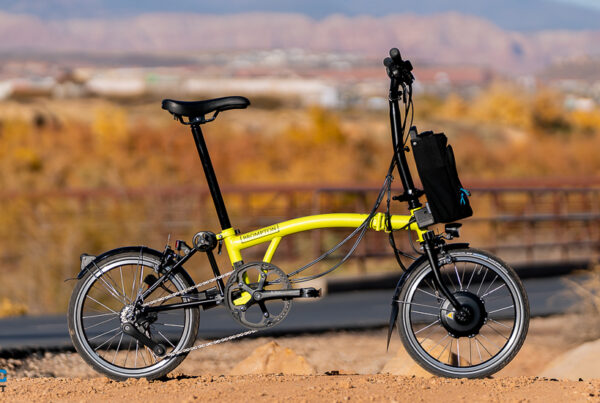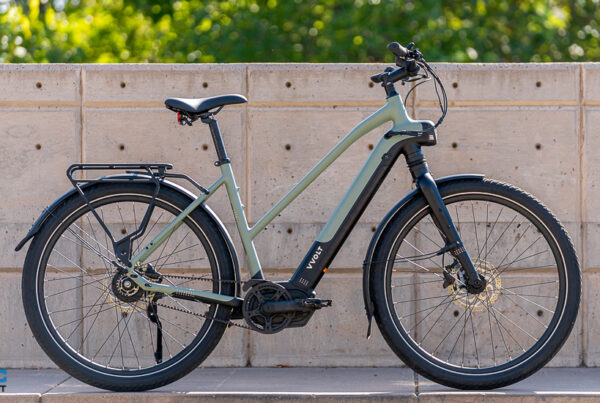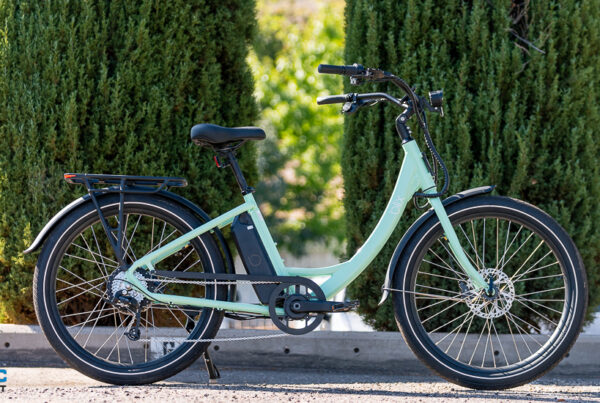While most brands give general guidance on if it’s safe to ride their e-bikes in the rain, some take it a step further and get their componentry formally rated for water resistance. This is called an IP rating, which stands for “ingress protection” and gives consumers a clear picture of how protected their electrical equipment is from solid and liquid intrusion (most often dust and water for our purposes).
For example, Aventon e-bikes boast an IPX4 rating and the Turboant Thunder T1 electric fat bike, which we’re currently in the process of reviewing at the time of this post, is marked with an IP65 rating.
But what do these numbers mean? Let’s break it down.
An IP standard has three primary parts:
- The letters, in this case “IP” which stand for ingress protection
- The first number, which indicates the protection against solid particles like dust
- The second number, which indicates the protection against liquids
The numbers correlate with specific levels of protection, such as the ability to withstand a steady stream of water or even immersion. There’s a total of eight rating levels for liquid resistance and six for solid resistance, and those are easily googleable so you can deduce your specific e-bike’s IP rating, should it have one.
Let’s do some examples using the Aventon IPX4 rating and the Turboant’s IP65 rating:
- The Aventon e-bike IPX4 rating
- The “IP” indicates you’re looking at an ingress protection standard
- The “X” indicates it hasn’t been tested against intrusion by solids
- The “4” tells you it’s protected against splashing water
So Aventon’s IPX4 rating tells you that Aventon e-bikes have not been tested against dust intrusion (though that doesn’t mean it’s not resistant to dust) and the bike’s electrical components can withstand splashing water. That means Aventon e-bikes should be OK to ride in the rain and even through some puddles.
- The Turboant Thunder T1 IP65 rating
- The “IP” indicates you’re looking at an ingress protection standard
- The “6” indicates it’s dust tight
- The “5” tells you it’s protected against jets of water
So the Turboant Thunder T1’s IP65 rating means its electrical components are dust tight and protected against jets of water, but not
Tips for safe e-bike riding in the rain
Aside from the basic task of checking that it’s safe to ride your e-bike in the rain, there are some additional best practices that’ll make riding in foul weather safer and more enjoyable.
Fenders are never a bad idea, though I wouldn’t say they’re mandatory. The Electric Bike Report galactic headquarters is in the desert of southern Utah, which seldom sees rain. When it does rain, it’s brief enough we don’t really need fenders and if it does rain hard, it’s usually so severe you don’t want to be outside. Period.
If you do live in an area with frequent rain go with full-coverage fenders that wrap around one-third to a half of the tire’s diameter.

Even on an e-scooter, the principal is the same — be prepared for rain and take care of your equipment.
Lights are also a good idea — in fact, I’m a proponent of always carrying at least a small light, even if I’m not planning on riding at night. This is more important so that you can
Slow down and take it easy in the corners. Just like driving a car on wet roads, your e-bike’s tires likely won’t hook up as well in the rain. Braking early and turning slower than normal are key to safe e-biking in the rain.
Layer up and plan ahead, because you know what’s worse than getting caught in an unexpected downpour? Spending the rest of your day in wet clothes because you didn’t bring a rain shell. This is perhaps most important for e-bike commuters, who I’d argue should find a way to keep at least a waterproof rain jacket in a pannier bag or their backpack at all times.
Clean and maintain your bike after getting caught in the rain. Wipe the whole thing down with special care to dry the electrical components and battery. Remove the battery if you can and dry the terminals and the compartment. But also be sure to dry and relube the chain, as water can strip lubricants off your drivetrain and degrade your shifting. Also avoid using compressed air to dry your bike, as this can just drive water into sensitive parts like bearings and electrical componentry.
Overall, a little rain shouldn’t keep you from enjoying your e-bike. Be sure to know exactly how much moisture your bike can handle, and take care to be prepared for inclement weather. But other than that, get out there and go pedal — rain or shine.
Source link







